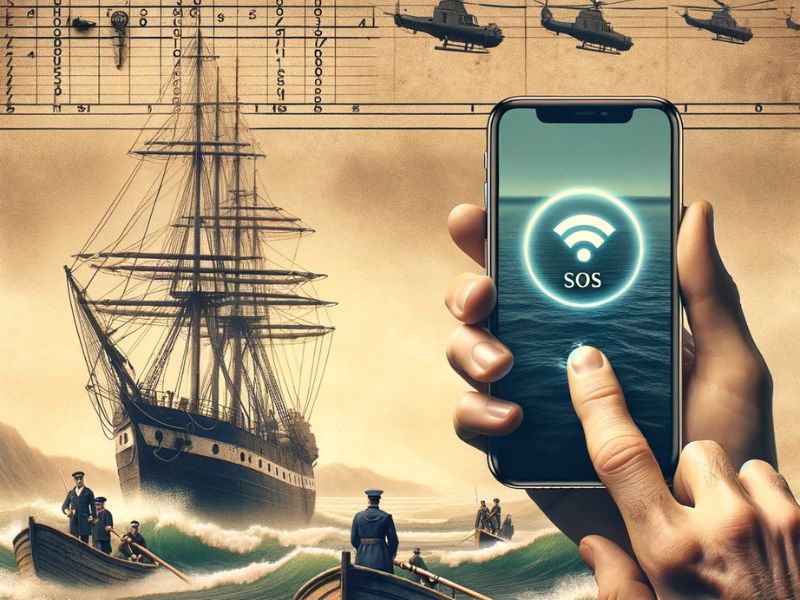
SOS: Distress Signal and Its Historical Evolution
From Telegraphy to Digital, the Story of a Universal Signal
The Birth of SOS
The story of the “SOS” distress signal begins in the early 20th century. Germany was the first country to adopt the SOS, known as the Notzeichen, in 1905. It was then recognized internationally when the first International Radiotelegraph Convention, held in Berlin in 1906, adopted the signal among its regulations. The SOS signal, composed of three dots, three dashes, and three dots, came into effect on July 1, 1908. This Morse code signal was chosen for its simplicity and clarity in transmission, and despite not having an alphabetic meaning, it became commonly known as “SOS”.
SOS in the Titanic Disaster
SOS gained worldwide fame during the sinking of the Titanic in 1912. Although officially adopted in 1908, the “CQD” signal remained in use, especially in British services. In the case of the Titanic, the first signal sent was “CQD”, but on the suggestion of Harold Bride, the second radio officer, it was interspersed with “SOS”. The Titanic represented one of the first instances where the SOS signal was used alongside CQD in a maritime emergency situation, marking a turning point in the adoption of SOS as a universal distress signal.
SOS in Popular Culture and Modern Technologies
SOS has permeated popular culture as a universal symbol for requesting help in emergency situations. It has appeared in literature, films, music, and art, taking a central role in narrative plots and becoming a call to immediate action. Although Morse code is less essential with advancements in radio communications, SOS remains useful in isolated emergency situations. Today, SOS has been integrated into numerous electronic devices and systems within vehicles, often activated with a simple button press. This technological integration reflects the vital importance of the SOS concept, even with advances in communication methods.
The Ongoing Evolution of SOS
The history of the SOS signal shows how a simple Morse code signal has become a global symbol of rescue. Its evolution, from initial use in telegraphy to an integrated distress signal in modern technology, demonstrates its ongoing importance and adaptability to technological changes. Even as the method of transmitting SOS has changed over time, its fundamental meaning as a request for help in critical situations remains unchanged.


